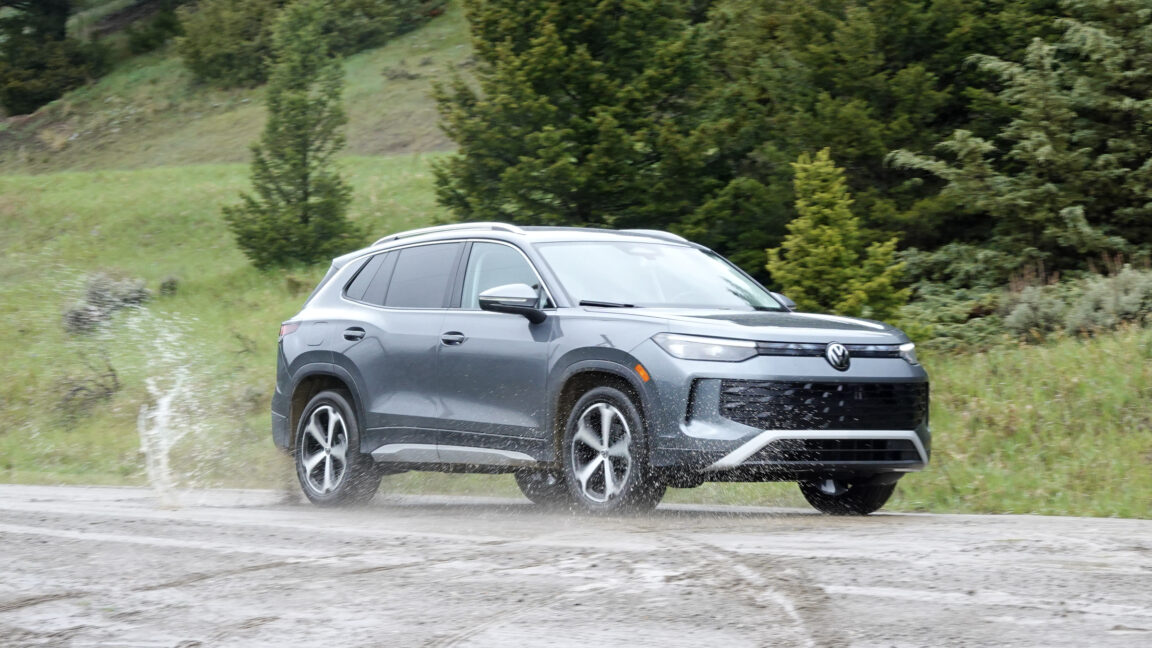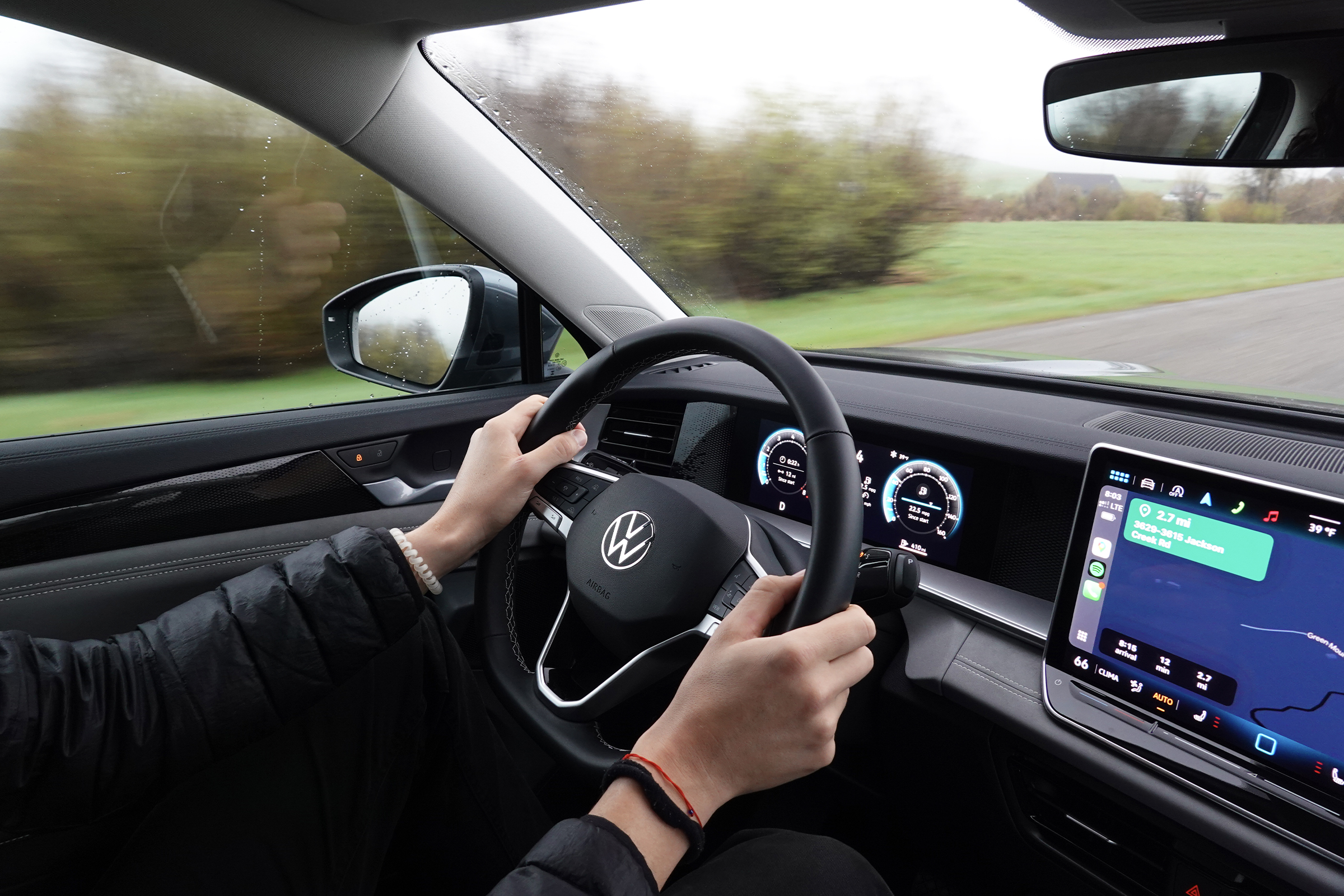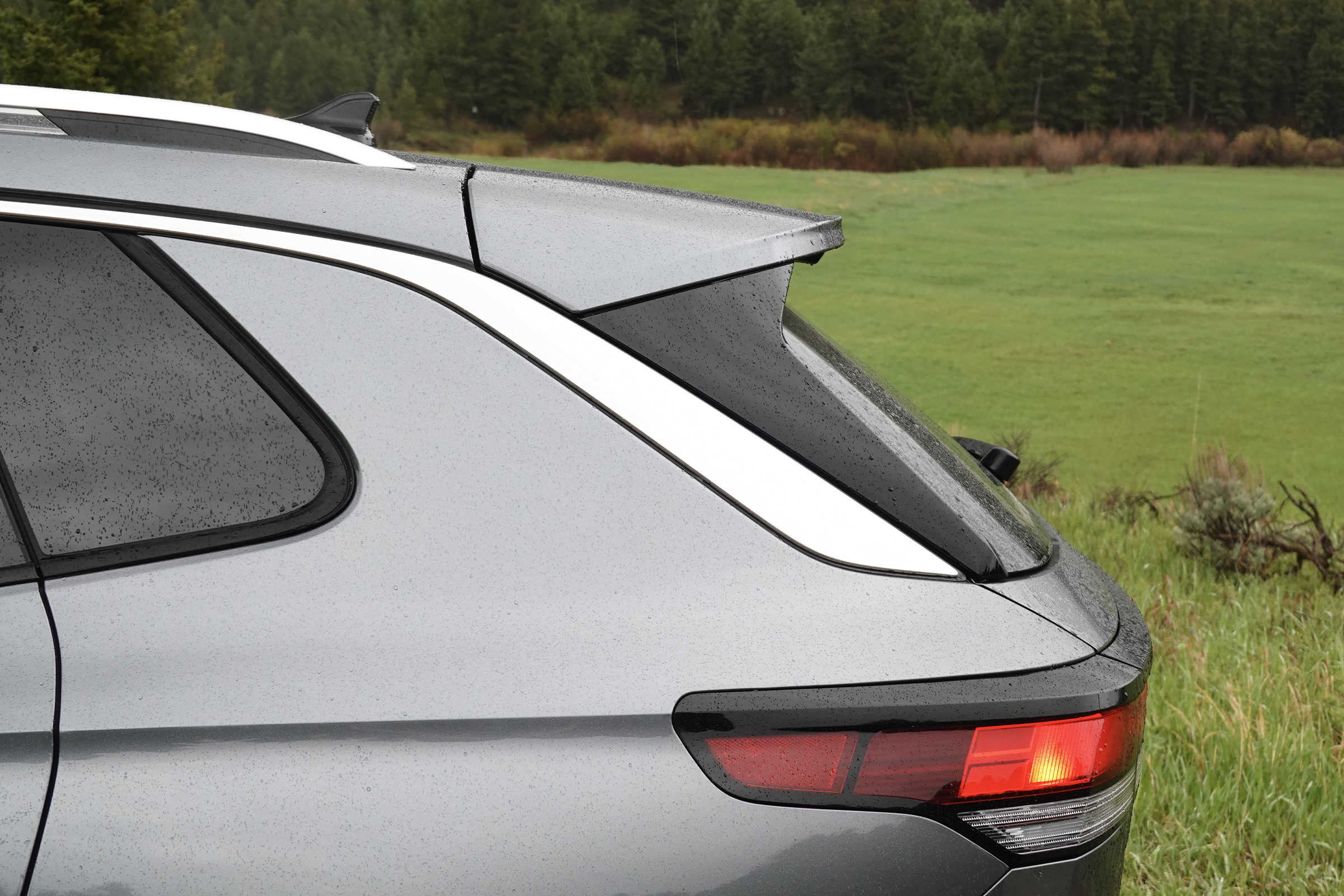
Credit: Michael Teo Van Runkle
In the modern era, cars keep getting bigger and bigger between generations. Or at least, they're certainly not getting smaller. That's especially true in America, where bigger is always better and the vehicles in the current crop of "compact" crossovers are now nearly as large as full-size SUVs from a decade ago. Don’t ask about curb weights, either, as more powerful drivetrains, including widespread adoption of hybrid-electric components, add significant mass, as highlighted by the new BMW M5 "sport sedan."
Within that fray, however, the new Volkswagen Tiguan stands apart. VW purposefully refined the third-gen Tiguan to cater better to American consumer needs, which meant dropping the third row to create more interior volume for the front and rear seats. The wheelbase still measures the same length at 109.9 inches (2,791 mm), but shorter overhangs mean the overall length actually shrinks by nearly two inches. Yet more efficient packaging on the inside also results in a marginal passenger volume increase of about two percent.
To help keep pricing attractive at below $30,000 to start, VW also decided to skip out on a hybrid variant, but the new EA888evo5 2.0 L turbocharged-four nonetheless delivers more power and improved fuel economy. And all of the above actually contributes to the Tiguan losing weight while evolving from the second to third generation, shaving about 160 lbs (72.5 kg), depending on trim.
Generic outside, great inside
Volkswagen USA recently invited Ars to join a rainy test drive of the Tiguan’s SE and SEL R-Life trims in Bozeman, Montana. At first glance, the new exterior definitely hews more closely to current crossover trends, which the Tiguan arguably helped to inaugurate back in the late-2000s. There's also a healthy dose of Volkswagen ID.4 design language throughout, especially at the nose. The interior truly steps up to a new level, though. I started out in an almost-base Tiguan SE, which means front-wheel drive and minimal options, not even onboard navigation.
Like most buyers, though, I connected my iPhone via Wireless CarPlay, which effectively makes onboard nav obsolete. And the SE’s 12.9-inch touchscreen atop the dash provides all the necessary tech, as premium materials throughout clearly prioritize touchpoints to enhance the impression of quality.
From the armrests to dash finishing and CloudTex accents, the textures in all the right places reminded me of the early-2000s, when VW Group overlord Ferdinand Piëch understood how much these little impressions make a big difference, allowing VW to sell economy cars that bested even luxury German marques in terms of perceived quality.
One of the highlights—quite literally—is a new "Atmosphere" knob at the center of the center console, since the shifter moves to the steering column. This dial controls ambient lighting, entertainment volume, and drive modes simultaneously (or only drive modes) with a click downward. I found the system a little silly and would prefer the knob to adjust the drive modes first, then control in-cabin functions. For the modern buyer who prioritizes ambience over driving dynamics, perhaps adjusting the Atmospheres from Joy to Energetic or Minimal will allow for more personal expression on the daily commute.
But out in the Montana hills, that driving experience possibly even exceeded the per-dollar impressiveness of the Tiguan’s interior. The little engine certainly never overwhelms with power, but it steps up to 201 hp (150 kW) versus 184 hp (137 kW) for the outgoing gen, which Volkswagen achieved with new geometry for the variable turbine, revised camshafts, and a new fuel injection system.
More importantly, the suspension stands out as the star of the show, with a smooth and confident ride that absorbed Montana’s weather-beaten roads in almost total silence. It even took me a while to notice the unnoticeable: a decided lack of wind noise, which suggests how much aerodynamics potentially played a role in improving the Tiguan’s fuel economy, despite the mild power bump.

We liked driving this one.
Credit: Michael Teo Van Runkle
As usual for modern crossovers, despite sporty aspirations, the electrically assisted steering winds up being fairly dull—other than the moderate amount of torque steer from the SE’s front wheels under hard acceleration, that is. But even as the day transitioned from sunny to rainy and back again, the Pirelli Scorpion Verde all-season tires provided plenty of grip, and the SE’s 19-inch wheels with taller sidewalls probably helped with the suspension compliance, keeping the dampers in the perfect middle zone between firmness and comfort.
For more severe weather, every Tiguan trim comes with available 4Motion all-wheel drive as well, which adds $1,500. Stepping up to 4Motion also adds a bit more grunt from the engine, not to compensate for the nearly 250 lbs (110 kg) of additional driveline weight but instead because the AWD-capable transaxle can handle a higher torque rating. Specifically, the 4Motion models step up from 207 lb-ft (153 Nm) of torque to 221 lb-ft (163 Nm), though even in slippery conditions, I discovered the SE with FWD felt faster. VW tuned the little inline-four differently, and the AWD gearbox also has shorter ratios for first through fourth, but a taller final drive results in slightly less pep at lower speeds.
I experienced 4Motion in the top-spec SEL R-Line package, which still starts below $40,000 at $39,755 (before a $1,425 destination charge). Alongside the all-wheel drive—and therefore torque bump—the SEL R-Line also comes standard with heated, ventilated, and massaging front seats (and firm massagers at that). American Walnut wood grain for the dash and a 15-inch touchscreen further belie the price point, and the SEL R-Line gets more aggressive drive modes, which translate to further variance in the Atmosphere settings as well.

Spoiler alert.
Credit: Michael Teo Van Runkle
Still, because the 4Motion feels just a smidge slower, for me, a base Tiguan S or SE provides a more compelling combo of features for the money. I’d recommend anyone who wants more power to hold off for the R-Line Turbo coming later this year with 268 hp (213 kW), since Volkswagen perfectly nails the mix of aspirational sportiness, tech connectivity, and compact packaging in this more economical crossover.
No longer is the Tiguan simply a European hatchback with the ride height jacked up to satisfy American crossover buyers. Instead, this third generation arrives as a perfect demonstration of market research allowing an OEM to better understand the customer, which results in Volkswagen returning to form in a big way, despite the Tiguan’s small stature.

-
 C114 Communication Network
C114 Communication Network -
 Communication Home
Communication Home


